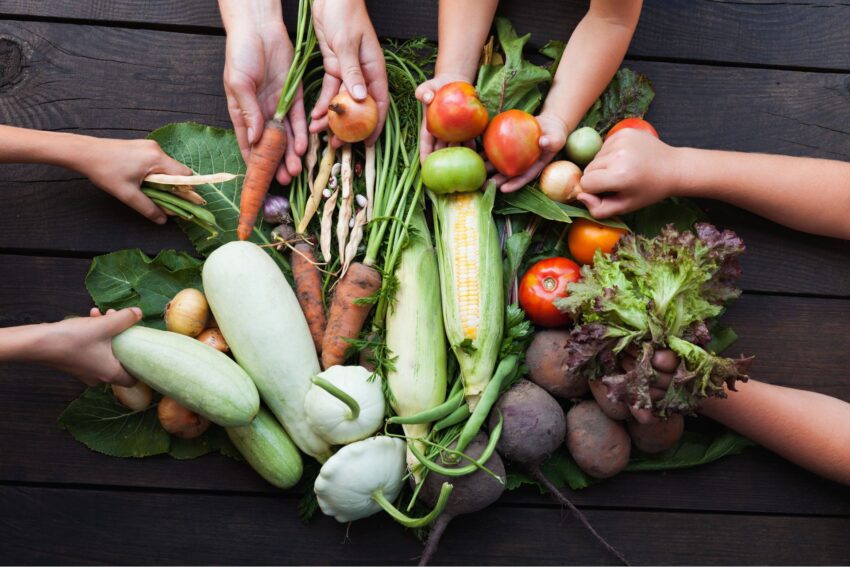National Agriculture Day (March 18th) is a time to pause and reflect on the indispensable role America’s farmers play in sustaining not just our nation, but the world. These hardworking men and women rise before dawn, toil through unpredictable weather, and pour their lives into the soil to produce the food that fuels our bodies and drives our economy. From the sprawling corn, soybean and wheat fields of the Midwest to the orchards of California and the cattle ranches of Texas, farmers are the backbone of our society, ensuring that we have nourishment on our tables and stability in our communities. Their labor feeds millions here at home and reaches far beyond our borders, making the United States a global leader in agriculture and a beacon of abundance.
One of the most vital contributions farmers make is providing the raw materials for a healthier America—whole foods, fresh from the earth, untainted by the processed additives that have crept into so much of our modern diet. Imagine a crisp apple straight from the tree, a sweet carrot pulled from the ground, or a juicy tomato ripened under the sun. These are the gifts of our farmers, packed with nutrients and free from the artificial sweeteners, preservatives, and fats that too often clog supermarket shelves. When people choose to eat more of these farm-fresh foods—whether through farmers’ markets, farm-to-table programs, or even a neighbor’s roadside stand—they’re not just improving their own health; they’re directly supporting the livelihoods of those who grow them. Cutting out the middlemen doesn’t just mean fresher produce; it means more money stays in farmers’ pockets instead of being siphoned off by corporate processors or distributors who add little value and too many empty calories.
This direct connection between farmers and eaters is a win-win. For Americans, it’s a chance to combat the rising tide of obesity, diabetes, and heart disease that’s fueled by overprocessed junk masquerading as food. For farmers, it’s an opportunity to build wealth and resilience, keeping their operations thriving without relying on unpredictable commodity markets or distant supply chains. Programs that link farms to local communities—like those that bring fresh produce to schools or food pantries—amplify this impact, teaching kids the value of real food while giving growers a steady, local market. It’s a simple, elegant solution: more whole foods from the farm mean healthier people and stronger rural economies.
That’s why it’s disheartening to hear about the recent decision by the U.S. Department of Agriculture to slash over $1 billion in funding for programs that connected farms to schools and food pantries. This cut, announced earlier this month, eliminated $660 million from the Local Food for Schools program and nearly $500 million from the Local Food Purchase Assistance program. These initiatives had been a lifeline, channeling fresh fruits, vegetables, and meats from nearby farms to students and families in need. In states like Iowa, Wisconsin, and Massachusetts, farmers counted on this support to sell their harvests locally, while schools leaned on it to put nutritious meals on lunch trays without breaking their budgets. The loss is a blow—not just to the farmers who are now laying off workers or rethinking their planting seasons, but to the kids who won’t taste that farm-fresh difference.
It’s a shame that instead of reforming these programs to address any inefficiencies, the decision was made to axe them entirely. Encouraging farm-fresh foods for American students is a noble goal—good for health, good for education, good for rural communities. The idea wasn’t the problem; perhaps the execution was. Maybe the real issue is that such efforts shouldn’t have to lean so heavily on taxpayer dollars in the first place. Imagine if we could foster a system where schools, families, and farmers could connect more organically—through local incentives, private partnerships, or even just a cultural shift toward valuing what’s grown close to home. The USDA’s cuts remind us that government programs can be fragile, but the bond between farmers and their communities doesn’t have to be.
On this National Agriculture Day, let’s celebrate the farmers who keep our nation strong and recommit to supporting them by choosing their whole, unprocessed bounty whenever we can. Their work isn’t just about feeding us today; it’s about building a healthier, wealthier tomorrow. Every bite of fresh produce we take is a vote for their prosperity—and a step toward a better America.


